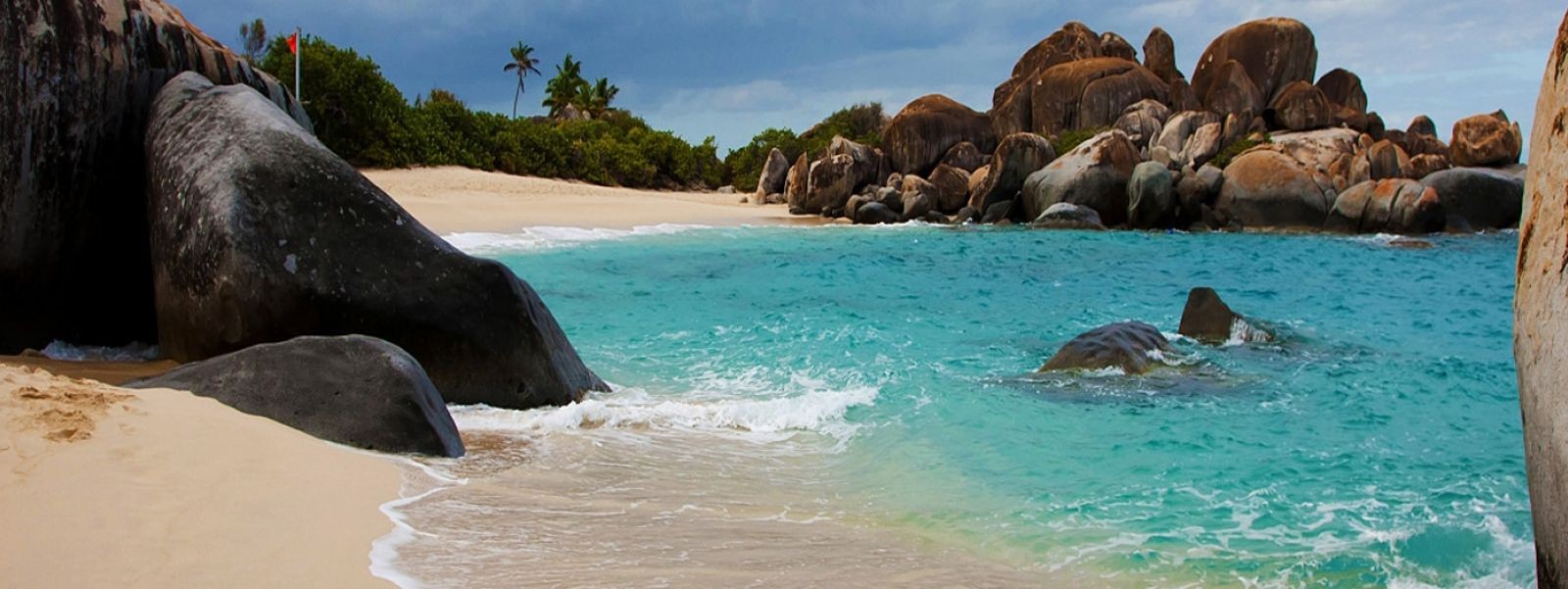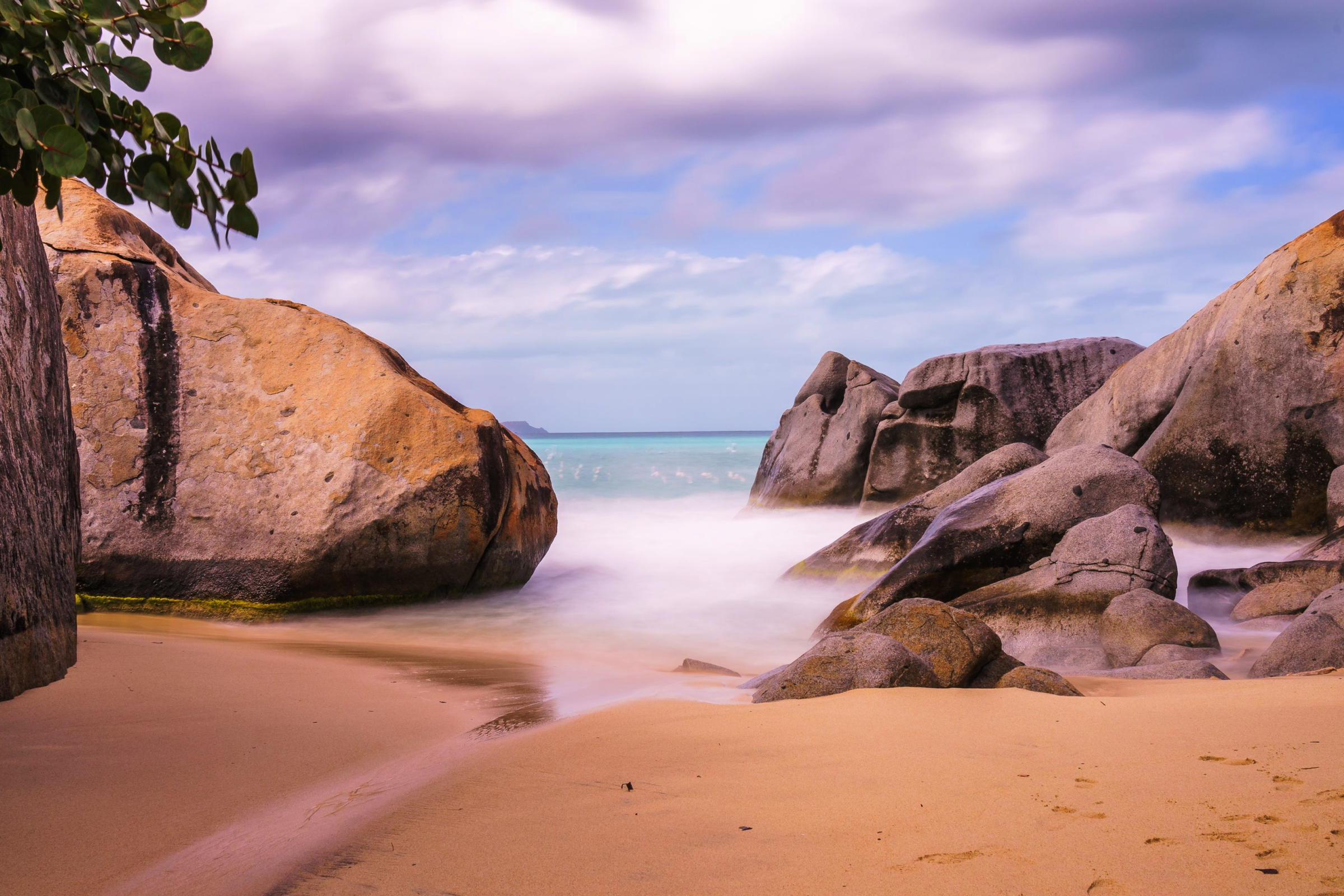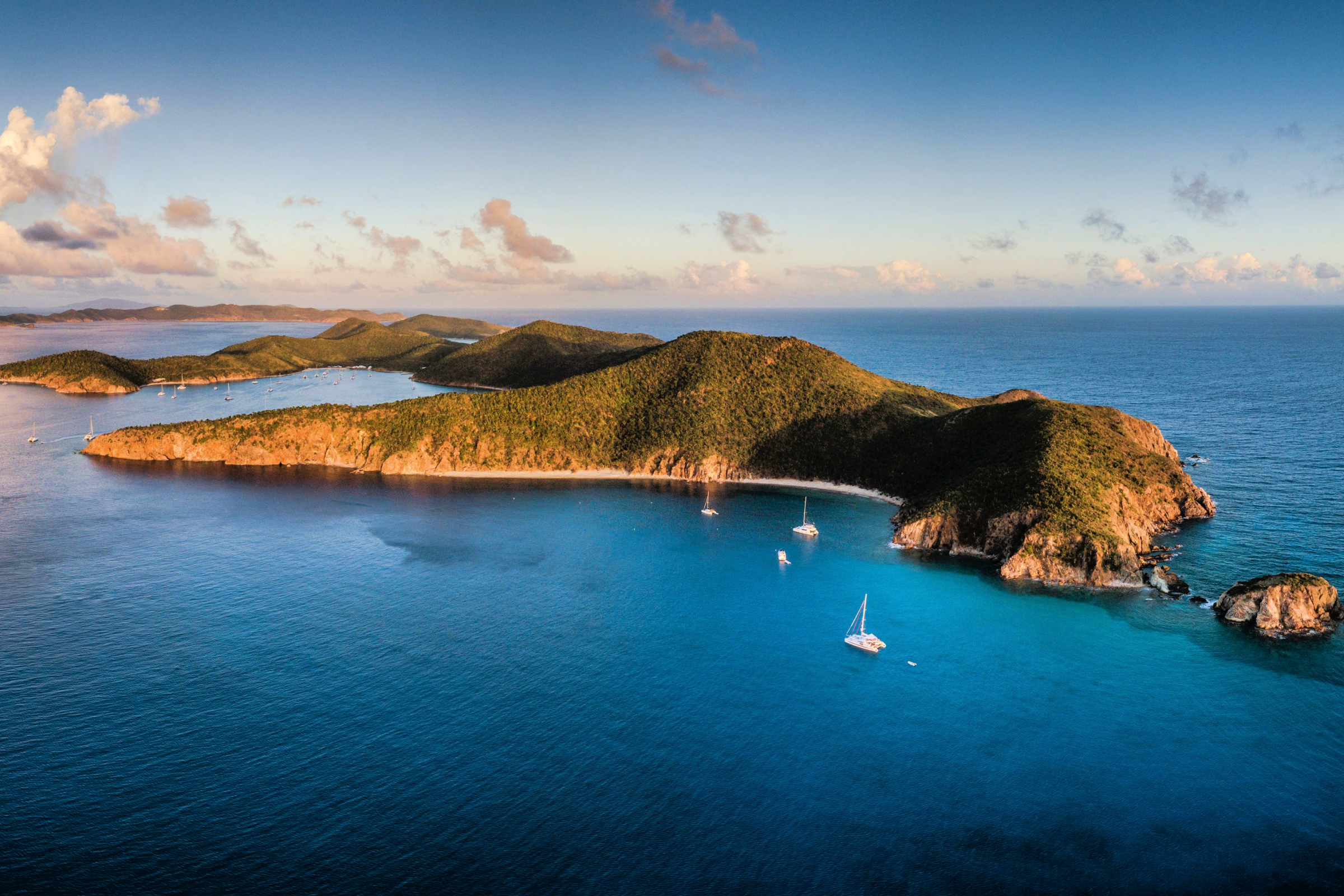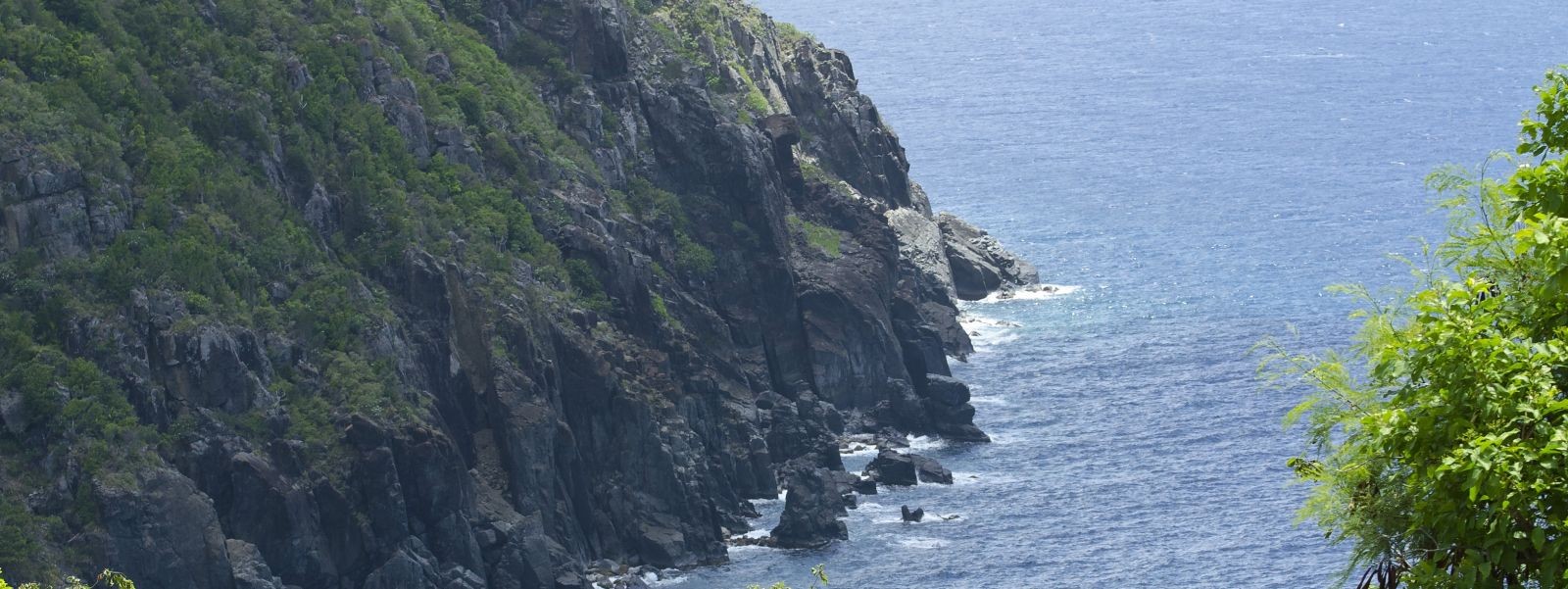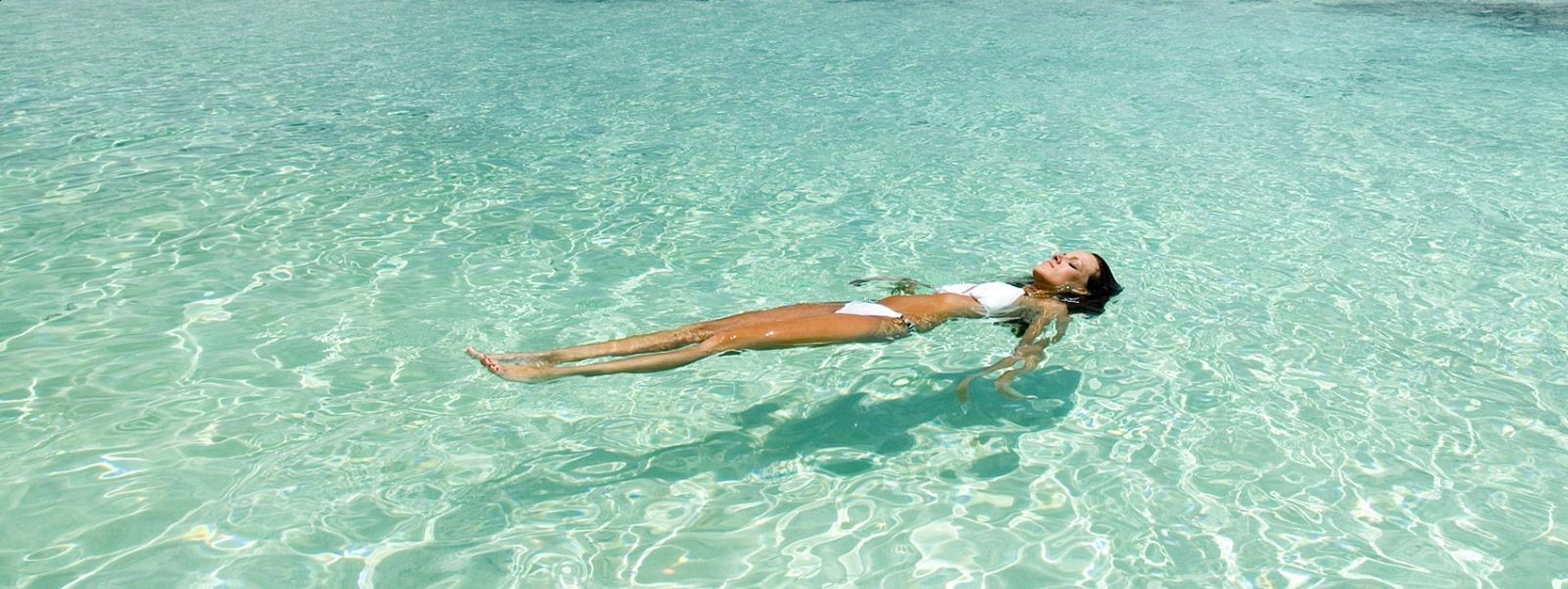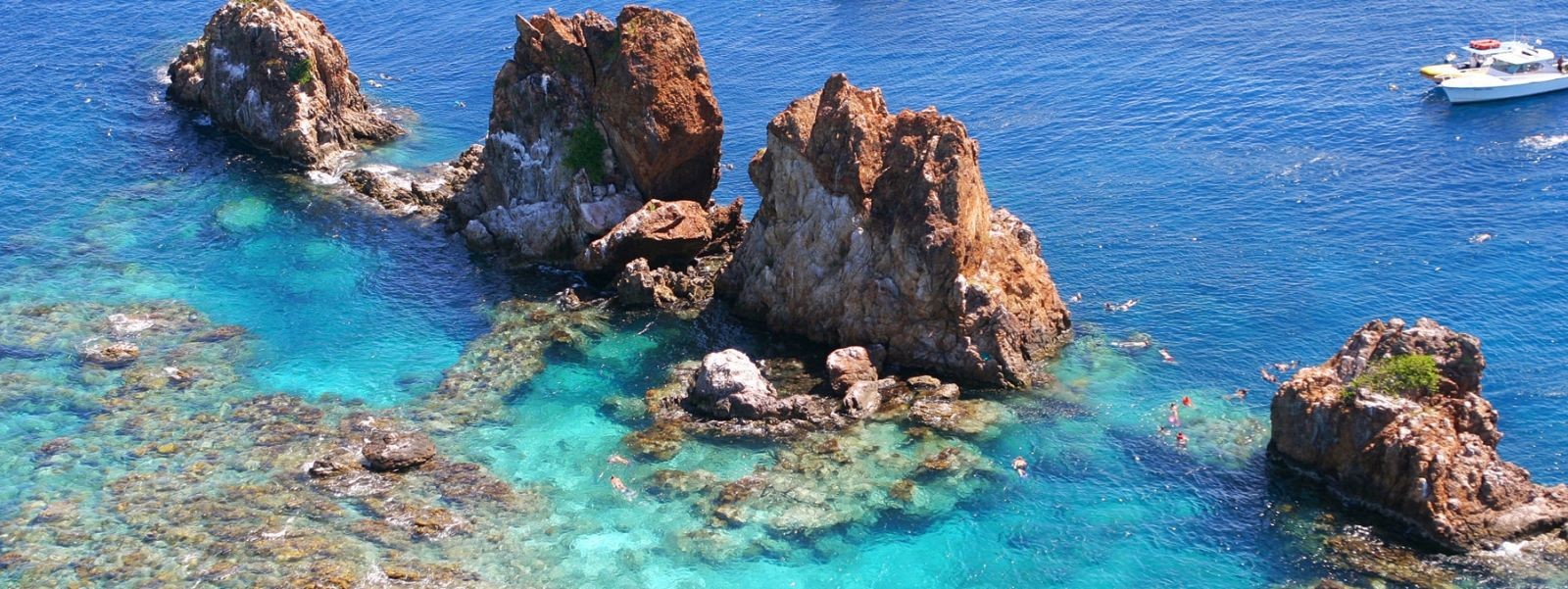Fast Facts About the British Virgin Islands:
- Capital – Tortola
- Currency – US Dollar
- Language – English
- Religion – Christianity
- Voltage – 110v
- Driving – On the left-hand side of the road.
- Average temperature – 27.5oC (81.5oF)
Climate and Weather in the BVI
The British Virgin Islands please travellers with a subtropical climate featuring mild temperatures for the majority of the year. Despite being situated in the tropics, the high temperatures are sufficiently tempered thanks to the gentle trade winds that blow from the northeast.
As for the humidity, it is relatively low year-round, while the temperatures can range from 26.4oC (79.5oF) in the winter and climb to around 29oC (84.1oF) from June through October.
In regards to the wet, dry, and hurricane seasons, these last from September to December, February to July, and from August through September, respectively. However, when it comes to hurricanes, the British Virgin Islands are quite safe, considering that only around four hurricanes hit the country in 100 years.
When to Travel to the British Virgin Islands
Concerning the best time to visit the British Virgin Islands, the period between late spring to mid-summer seems to be perfect, especially if you want to enjoy outdoor activities and the crystalline waters of the BVI with warm weather. During this time, the daytime temperatures are around 29oC (85oF) on average and drop to about 22oC (72oF) during the night, which creates great conditions to indulge in an evening dining experience or walk around without sweating or feeling uncomfortable in any way. However, any time of the year has an appealing factor to it, so it all depends on what you are after from your British Virgin Islands vacation.
The Local Cuisine
The islanders love cooking and barbecuing and the best cooks are, of course, the older women within each community! What is funny about cooking traditional recipes in the British Virgin Islands is the fact that most of the time, everybody cooks with taste and memory rather than recipes! So, asking for one (a recipe) is more likely pointless in this respect! Regardless of the lack of a solid recipe, though, expect gastronomic masterpieces that melt in the mouth and please the soul.
A staple in the British Virgin Islands cuisine is conch (both fritters and creole style). Fish and fungi, roti, callaloo soup, fried plantains, saltfish, rice and peas, and grunts are also popular dishes that will explode in your mouth, sending exhilarating signals throughout your body. And, as is the case with all Caribbean cuisines, the food is preferred super spicy and seasoned with local herbs.
The BVI Culture & Favourite Pastimes
The British Virgin Islands have influences from several different cultures and blend the Caribbean with African and European elements very nicely. Also known as the Sailing Capital of the Caribbean, the BVI is the place where everybody learns how to sail from a very young age. Obviously, sailing is a favourite pastime for the locals, which is why some of the most popular festivals on the British Virgin Islands cays have to do with regattas and sailing contests and draw the attention of thousands of islanders (and not only).
For the same reason, you will find everything from bar boats to extra-luxurious yachts available for rent (or even to charter). Besides sailing though, the locals love anything that has to do with the sea, from fishing and scuba diving to windsurfing. As for the sports and activities that take place on the land, the British Virgin Islanders are loyal to their British colonial heritage and throw themselves in cricket and soccer, although softball, basketball, cycling, baseball, and squash are gradually gaining more popularity with each passing day.
Tortola Facts:
- Tortola wears two hats; one as the capital of the British Virgin Islands and the other as the largest of the islands that compose the BVI.
- Tortola is not served with direct flights from the USA (and several other countries). Travellers usually have to transfer to Tortola’s international airport (Terrance B. Lettsome International Airport) from San Juan.
- Tortola is packed with high-end resorts, adorable white-sand beaches, an exquisite dining scene, and unique history that can be explored by visiting historical sites and museums, such as the Lower Estate Sugar Works Museum which highlights the island’s slavery and sugar history.
- Some of the must-visit local attractions are Callwood Rum Distillery in Cane Garden Bay, Sugar Mill Restaurant, and Saint Phillips Church, among the countless bays, coves, towns, and cays also worth a visit.
British Virgin Islands Attraction Tips
The British Virgin Islands are home to a unique marine park, Rhone Marine Park, located on Salt Island. It is the only one of its kind in the country thanks to the Rhone Wreck – a Royal Mail steamer that now lies in the bottom of the sea surrounding Salt Island after it sank during the 1867 hurricane with 125 passengers and crew members on board.
Another equally popular local attraction is The Baths in Virgin Gorda, which is a bay now turned into a national park that consists of imposing grottoes created by a pile of massive rocks that dot the beach. You can also snorkel or swim through the rooms and caves created by these huge rocks while getting glances of the shimmering sea through diamond-shaped crevices.
As expected, though, the primary pole of attraction for visitors and locals alike is the shorelines that adorn the 60+ islands that form the BVI. Indeed, expect an inviting variety and change of scenery, from volcanic terrains to lush-filled landscapes and from remote and secluded powdery beaches to lively and upbeat coasts to please all tastes. Some of the most favoured ones are White Bay on Jost Van Dyke island, Deadman’s Bay on Peter Island, and Cane Garden, as well as Long Bay, on Tortola island. You even have the luxury to enjoy the utmost exclusivity in your seaside adventures by heading to one of the private islands in the BVI and enjoying their pristine shores away from the crowds.
In any case, snorkelling, scuba diving, sailing, kitesurfing, paddleboarding, and so many more water sports and activities are available. There is also a high number of national parks to visit and have your jaw drop. However, do not expect golf courses across the British Virgin Islands, as is the case with other Caribbean destinations. As mentioned above, the locals are falling head over heels for other types of sports!
Fast Facts About the British Virgin Islands:
- Capital – Tortola
- Currency – US Dollar
- Language – English
- Religion – Christianity
- Voltage – 110v
- Driving – On the left-hand side of the road.
- Average temperature – 27.5oC (81.5oF)
Climate and Weather in the BVI
The British Virgin Islands please travellers with a subtropical climate featuring mild temperatures for the majority of the year. Despite being situated in the tropics, the high temperatures are sufficiently tempered thanks to the gentle trade winds that blow from the northeast.
As for the humidity, it is relatively low year-round, while the temperatures can range from 26.4oC (79.5oF) in the winter and climb to around 29oC (84.1oF) from June through October.
In regards to the wet, dry, and hurricane seasons, these last from September to December, February to July, and from August through September, respectively. However, when it comes to hurricanes, the British Virgin Islands are quite safe, considering that only around four hurricanes hit the country in 100 years.
When to Travel to the British Virgin Islands
Concerning the best time to visit the British Virgin Islands, the period between late spring to mid-summer seems to be perfect, especially if you want to enjoy outdoor activities and the crystalline waters of the BVI with warm weather. During this time, the daytime temperatures are around 29oC (85oF) on average and drop to about 22oC (72oF) during the night, which creates great conditions to indulge in an evening dining experience or walk around without sweating or feeling uncomfortable in any way. However, any time of the year has an appealing factor to it, so it all depends on what you are after from your British Virgin Islands vacation.
The Local Cuisine
The islanders love cooking and barbecuing and the best cooks are, of course, the older women within each community! What is funny about cooking traditional recipes in the British Virgin Islands is the fact that most of the time, everybody cooks with taste and memory rather than recipes! So, asking for one (a recipe) is more likely pointless in this respect! Regardless of the lack of a solid recipe, though, expect gastronomic masterpieces that melt in the mouth and please the soul.
A staple in the British Virgin Islands cuisine is conch (both fritters and creole style). Fish and fungi, roti, callaloo soup, fried plantains, saltfish, rice and peas, and grunts are also popular dishes that will explode in your mouth, sending exhilarating signals throughout your body. And, as is the case with all Caribbean cuisines, the food is preferred super spicy and seasoned with local herbs.
The BVI Culture & Favourite Pastimes
The British Virgin Islands have influences from several different cultures and blend the Caribbean with African and European elements very nicely. Also known as the Sailing Capital of the Caribbean, the BVI is the place where everybody learns how to sail from a very young age. Obviously, sailing is a favourite pastime for the locals, which is why some of the most popular festivals on the British Virgin Islands cays have to do with regattas and sailing contests and draw the attention of thousands of islanders (and not only).
For the same reason, you will find everything from bar boats to extra-luxurious yachts available for rent (or even to charter). Besides sailing though, the locals love anything that has to do with the sea, from fishing and scuba diving to windsurfing. As for the sports and activities that take place on the land, the British Virgin Islanders are loyal to their British colonial heritage and throw themselves in cricket and soccer, although softball, basketball, cycling, baseball, and squash are gradually gaining more popularity with each passing day.
Tortola Facts:
- Tortola wears two hats; one as the capital of the British Virgin Islands and the other as the largest of the islands that compose the BVI.
- Tortola is not served with direct flights from the USA (and several other countries). Travellers usually have to transfer to Tortola’s international airport (Terrance B. Lettsome International Airport) from San Juan.
- Tortola is packed with high-end resorts, adorable white-sand beaches, an exquisite dining scene, and unique history that can be explored by visiting historical sites and museums, such as the Lower Estate Sugar Works Museum which highlights the island’s slavery and sugar history.
- Some of the must-visit local attractions are Callwood Rum Distillery in Cane Garden Bay, Sugar Mill Restaurant, and Saint Phillips Church, among the countless bays, coves, towns, and cays also worth a visit.
British Virgin Islands Attraction Tips
The British Virgin Islands are home to a unique marine park, Rhone Marine Park, located on Salt Island. It is the only one of its kind in the country thanks to the Rhone Wreck – a Royal Mail steamer that now lies in the bottom of the sea surrounding Salt Island after it sank during the 1867 hurricane with 125 passengers and crew members on board.
Another equally popular local attraction is The Baths in Virgin Gorda, which is a bay now turned into a national park that consists of imposing grottoes created by a pile of massive rocks that dot the beach. You can also snorkel or swim through the rooms and caves created by these huge rocks while getting glances of the shimmering sea through diamond-shaped crevices.
As expected, though, the primary pole of attraction for visitors and locals alike is the shorelines that adorn the 60+ islands that form the BVI. Indeed, expect an inviting variety and change of scenery, from volcanic terrains to lush-filled landscapes and from remote and secluded powdery beaches to lively and upbeat coasts to please all tastes. Some of the most favoured ones are White Bay on Jost Van Dyke island, Deadman’s Bay on Peter Island, and Cane Garden, as well as Long Bay, on Tortola island. You even have the luxury to enjoy the utmost exclusivity in your seaside adventures by heading to one of the private islands in the BVI and enjoying their pristine shores away from the crowds.
In any case, snorkelling, scuba diving, sailing, kitesurfing, paddleboarding, and so many more water sports and activities are available. There is also a high number of national parks to visit and have your jaw drop. However, do not expect golf courses across the British Virgin Islands, as is the case with other Caribbean destinations. As mentioned above, the locals are falling head over heels for other types of sports!




